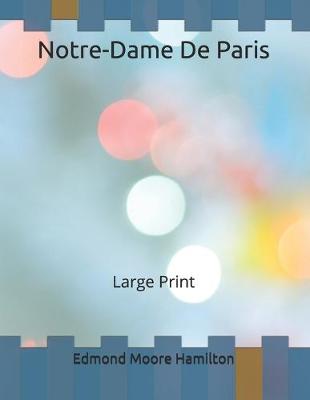
More commonly known as The Hunchback of Notre-Dame, Victor Hugo's Romantic novel of dark passions and unrequited love
In the vaulted Gothic towers of Notre-Dame Cathedral lives Quasimodo, the hunchbacked bellringer. Mocked and shunned for his appearance, he is pitied only by Esmerelda, a beautiful gypsy dancer to whom he becomes completely devoted. Esmerelda, however, has also attracted the attention of the sinister archdeacon Claude Frollo, and when she rejects his lecherous approaches, Frollo hatches a plot to destroy her, that only Quasimodo can prevent. Victor Hugo's sensational, evocative novel brings life to the medieval Paris he loved, and mourns its passing in one of the greatest historical romances of the nineteenth century.
John Sturrock's clear, contemporary translation is accompanied by an introduction discussing it as a passionate novel of ideas, written in defence of Gothic architecture and of a burgeoning democracy, and demonstrating that an ugly exterior can conceal moral beauty. This revised edition also includes further reading and a chronology of Hugo's life.
For more than seventy years, Penguin has been the leading publisher of classic literature in the English-speaking world. With more than 1,700 titles, Penguin Classics represents a global bookshelf of the best works throughout history and across genres and disciplines. Readers trust the series to provide authoritative texts enhanced by introductions and notes by distinguished scholars and contemporary authors, as well as up-to-date translations by award-winning translators.
I have been in a major reader's funk, I've had trouble becoming interested in one single novel or holding my attention. For me this is very rare! To the point of being concerned. Unfortunately, The Hunchback of Notre Dame had to fall in the period.
Several years ago I had a friend who had applied to Washington University in St. Louis. I was living there at the time and being unavailable she asked me to check it out and videotape it for her. The architecture was outstanding, with a plethora of gargoyles, so much so that every 30 seconds someone would exclaim "Look over here -- gargoyles!" It would have made a fantastic drinking game.
Hugo's novel is very much like this, rich in detail imbedding an exact replica in the reader's head. In fact, I believe Victor Hugo himself, sums it up perfectly: 'quiconque naissait poète se faisait architecte' ("whoever is born a poet becomes an architect")
"In the first place, how one's ears are stunned with the noise!-- how one's eyes are dazzled! Overhead, is a double roof of pointed arches, ceiled with carved wood, painted sky blue, and studded with gold; underfoot, pavement of alternate squares of black and white marble. A few paces from us stands an enormous pillar, then another, then another; in all seven pillars intercepting the hall longitudinally, and supporting the thrust of the double-vaulted roof."
I could go on and on but I would most likely get carpal tunnel.
Like Esmeralda's fate, it is still unclear why I put The Hunchback of Notre Dame aside, the characters were well-developed, and it had a plot that was definitely "going somewhere". Maybe another time, with a different mind-set, I can truly give Quasimodo the appreciation he deserves.
This review was originally posted on First Impressions Reviews
Reading updates
-
Started reading
-
Finished reading
-
26 November, 2018:
Reviewed
